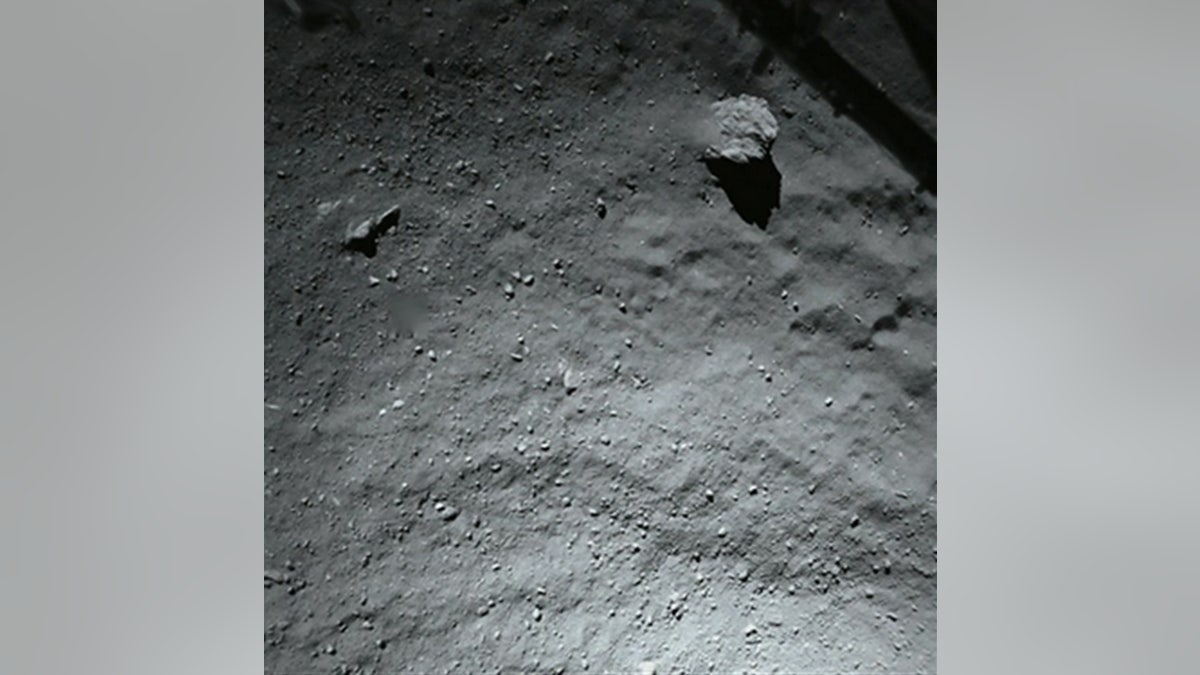
Image taken by Philae's ROLIS imager when it was about 131 feet above the comet's surface. (ESA/Rosetta/Philae/ROLIS/DLR)
The Philae probe has detected organic molecules in the atmosphere of comet 67P/Churyumov-Gerasimenko, according to initial data from the lander.
The European Space Agency has confirmed that Philae’s Cometary Sampling and Composition (COSAC) system, one of two gas analyzers on board the lander, was able to “sniff” the comet’s atmosphere and detect organic molecules after landing.
Dr Fred Goesmann, COSAC’s principal investigator, told the BBC that the team is still trying to interpret the results.
Another of Philae’s key tasks was to drill into the comet’s surface. In a statement released late on Monday, the ESA confirmed that the lander’s drill was activated, as were all the steps to transport the sample to an “oven” within the lander for examination. Scientists, however, need to analyze the data to find out whether a soil sample was actually examined, the agency said.
Philae made history on Nov. 12 when it became the first probe to land on a comet.
The culmination of an audacious 10-year mission, Philae successfully descended to the comet after separating from its Rosetta mothership. The touchdown, however, was fraught with problems, and the lander bounced twice before landing in the shadow of a cliff – a serious problem for the solar panels designed to provide long-term power to Philae after its primary battery is exhausted.
However, scientists are optimistic that Philae’s solar panels will eventually receive enough sunlight to power the probe. Before its battery ran out on Nov.15, the agency tilted the lander’s largest solar panel toward the sun in an attempt to generate future power.
67P/Churyumov-Gerasimenko, which is about 2.5 miles wide, travels at speeds up to 84,000 miles per hour.
Follow James Rogers on Twitter @jamesjrogers
